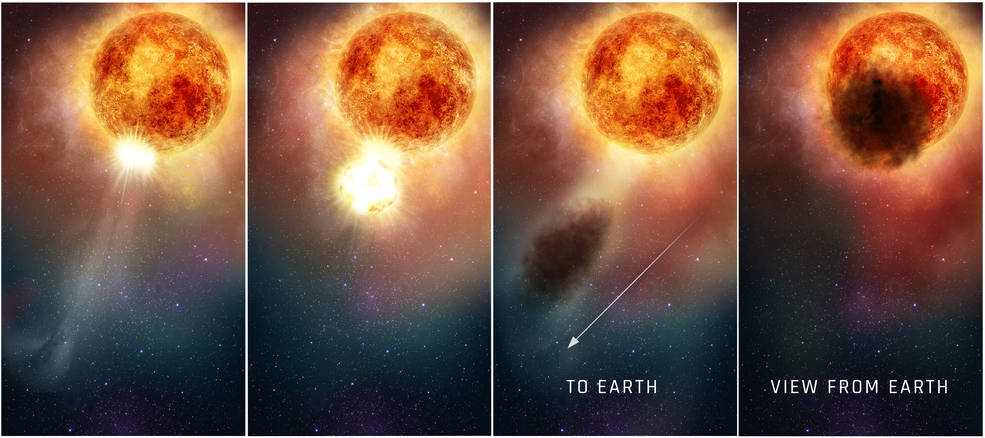From October 2019 into February 2020 Betelgeuse underwent a dimming, losing two thirds of its luminosity. In a recent article by Dupree, et.al. in the 13 Aug 2020 issue of Astrophysical Journal (ApJ) analysis of Hubble Space Telescope spectroscopic ultraviolet observations of Betelgeuse showed that during Sep-Nov 2019 there was a brightening in the Mg-II and C-II emission lines. Doppler measurements suggested hot material moving outward.
The article abstract [ https://iopscience.iop.org/article/10.3847/1538-4357/aba516 ] concludes "It appears that this extraordinary outflow of material from the star, likely initiated by convective photospheric elements, was enhanced by the coincidence with the outward motions in this phase of the ~400 day pulsation cycle. These ultraviolet observations appear to provide the connecting link between the known large convective cells in the photosphere and the mass ejection event that cooled to form the dust cloud in the southern hemisphere imaged in 2019 December, and led to the exceptional optical dimming of Betelgeuse in 2020 February."

The above 4-panel graphic by E. Wheatley (STScI) illustrates in the first two panels the outflow burst suggested by the ionized magnesium and carbon observed Sep-Nov 2019. The third panel shows the outburst cooling and by coincidence in the direction of the earth. The final panel shows the material now cooled as a scattering dust cloud, significantly reducing the Earth's view of Betelgeuse, dimming its apparent luminosity for months.[ https://www.nasa.gov/feature/goddard/2020/hubble-finds-that-betelgeuses-mysterious-dimming-is-due-to-a-traumatic-outburst ]